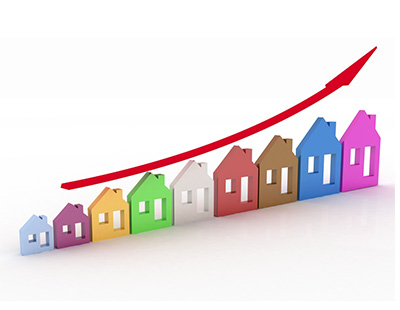
New research has analysed what influence the presence of a high-end retailer can have on the surrounding property market, as well as looking at what impact the store closures of the likes of Marks & Spencer, House of Fraser and Waitrose could have on the wider area.
The findings, carried out by hybrid estate agent Emoov.co.uk, revealed that – on average – the homes around a high-end retailer fetch more than the wider area. However, the increase in property prices is mostly linked to the presence of a Marks & Spencer, with homes in close proximity to an M&S store commanding on average 15% more than the wider area.
There has been much talk before of the Waitrose effect and, in recent years, the Lidl effect, but Emoov’s research suggests that the Marks & Spencer effect is most stark when it comes to an uplift in property prices.
The hybrid agency looked at property prices surrounding more than 900 M&S stores across the UK, before then comparing them to property prices for the wider area.
Although the wider area as a whole still had a high-end average property price tag of £538,292, this went up to £632,100 when examining the immediate vicinity surrounding an M&S store.
The gap in prices was most noticeable in the area surrounding the Heswall Simply Food in Merseyside. Properties located in the immediate vicinity of the store command an average price of £403,277, in comparison to just £160,053 in the wider Merseyside area – an uplift of 60%.
In London, meanwhile, living close to an M&S store sees prices go 36% higher than values in the wider area. The largest uplift, again at 60%, is seen in the area surrounding the Notting Hill Gate Simply Food, while the Simply Food in Tottenham Court Road also causes prices to rise 49% higher than the wider area.
Nonetheless, the recent headlines that Marks & Spencer are planning to close a number of stores across the nation as a reaction to the struggles of the retail sector - along with store closures announced by a number of other high-end retailers such as House of Fraser and Waitrose – might have the unintended consequence of forcing property prices to tumble in areas where these stores are located.
“The Waitrose effect and the impact of other high-end outlets have long been attributed to higher house prices, and this is true to some extent,” Russell Quirk, chief executive and founder of Emoov, said. “These stores are obviously located in areas home to their target demographic, with a more abundant additional income, more expensive homes and so on, but a well-populated high-street can help stimulate the surrounding property market.”
He added: “This is largely because home buyers crave the convenience of nearby amenities and while it is unlikely that the closure of a single shop will drastically impact house prices, a number of household names vanishing from our high streets could see surrounding property prices start to reduce.”






.png)

.jpg)








Join the conversation
Jump to latest comment and add your reply
Chickens and eggs. In Heswall the M&S opened because it was in a wealth area and their prices in store reflect this - some of the highest mark ups in UK I am told. Having M&S there has not raised prices, simply reflected the existing wealth of Heswall upper village.
Please login to comment